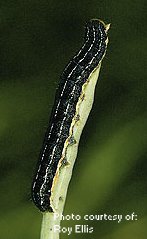Flax - Production and Management
Field Selection
Flax grows well on most prairie soils, except on poorly drained soils and sandy soils because of poor water retention. Medium to heavy-textured soils are preferable. These soils may crust in spring, which can inhibit flax emergence. Avoid fields that had canola or mustard in the previous year, as phosphorus uptake in flax will be reduced.
Certain herbicides are residual in soil to varying degrees and under a range of field conditions. To determine the factors affecting the persistence of each product and for specific re-cropping intervals, refer to the most recent Manitoba Agriculture Guide to Field Crop Protection.
Variety Information
|
|
Seeding Flax
Treatments
Flax is frequently affected by seedling blight. Fungicide seed treatments reduce the frequency of seedling blight. See the seed treatment section in the Guide to Field Crop Protection.
Dates
May 10 to May 31. Consult Seed Manitoba to choose the best-performing varieties under late-seeded conditions. Early-sown flax generally results in the highest yields, highest oil content and best straw quality.
Rates
Twenty-seven to 40 lb/acre to achieve a plant stand of 37-56 plants/ft2. Typical emergence for flax is 50% to 60%. Seeding rates on the high end of the recommendation should be used for ground prone to crusting, when seeding late or under heavy weed pressure.
Seeding Depth
One to 1.5 inches. Seed should be placed only deep enough to reach moisture. If cultivation is required before seeding, the seed bed may benefit from packing before or after seeding.
Fertilizer Recommendations For Flax
General
For specific recommendations on fertilizer rates, have your soil tested. Flax is easily injured by seed placed fertilizer. All fertilizer should be applied away from the seed.
If soil analysis is not available, a general recommendation is as follows:
| Nitrogen (N): | Apply no N following fallow or legume breaking, 0-40 lb/acre N following grass and grass-legume breaking and 40-60 lb/acre N following stubble. Nitrogen deficiency symptoms are stunting with small leaves that are yellowing, starting with the older leaves. |
| Phosphate (P2O5): | Apply phosphate at 30-40 lb/acre in a sideband or placed below the seed. Phosphate deficiency symptom is a darker leaf colour than normal, along with stunting, smaller leaves and thinner stem. |
| Potassium (K2O): | On sandy textured or organic soils, apply potassium at rates of 30-60 lb/acre. Deficiency symptoms are stunted growth and leaf tip browning on the lower leaves. |
| Sulphur (S): | Sulphur deficiency may occur in many soils and in any area of the province. A soil test is recommended to establish the available sulphur status of fields. Apply sulphate sulphur at 15 lb/acre when required. Sulphur deficiency symptom is leaf yellowing, starting with the newest leaves. |
Special Considerations
Chlorosis can occur on flax when soil moisture is high, particularly on calcareous (high lime) soils. This symptom may be caused by herbicide injury, soil compaction or deficiencies in zinc. The flax variety AC Emerson has shown the greatest tolerance to chlorosis conditions.
Find more information in the Manitoba Agriculture's Soil Fertility Guide
Weed Control
Weeds can reduce yield and reduce the quality of flax. Weed control in flax is particularly important because flax is a relatively non-competitive crop.
Weed seeds that are difficult to remove or cannot be cleaned out of flax and therefore are considered foreign material and cause downgrading are volunteer mustard, volunteer canola, wild oats and smartweed.
Links:
Insects
Grasshoppers, cutworms, army cutworms, Bertha armyworms, beet webworms, aphids, aster leafhoppers and wireworms can damage flax.
Links: |
 Bertha armyworm |
Diseases Affecting Flax
Seedling blight is the most common disease problem in flax and can be managed with the use of seed treatments. Fusarium wilt is also common and can be managed through the use of resistant varieties. Other diseases that economically affect flax are pasmo, stem break and browning.
Links:
Harvesting Flax
Desiccation
Flax can be desiccated to hasten drydown after the crop has reached physiological maturity (75% of bolls are brown). Stem drydown in particular can be hastened to reduce the interval before harvest.
Swathing
Flax can be swathed when 75% of the bolls are brown. Swathing is preferred to straight combining when the crop is not uniform in maturity, or if weeds are present. Once in a swath the seed is less susceptible to frost damage.
Timing
Immature seeds will turn black as a result of an early frost. However, desiccation or swathing prematurely will reduce yield.
Combining
Flax seed with a moisture content of 10% can be safely combined without the need for drying. The combine must be adjusted correctly to minimize seed coat damage to flax.
Straw Management
Flax straw can cause problems in seeding subsequent crops if it is chopped and spread, since the straw decomposes very slowly. The straw can be baled and sold to several industries that process the straw. To be sold, straw must be free of weeds and garbage. As a last resort, the straw can be burned.
Moisture
Flax is safe for storage at 10% moisture or less.
Storage
Once put into storage, flax should be cooled, since the seed continues a high respiration rate for up to six weeks. This respiration rate creates moist areas in the bin that become hot spots.
